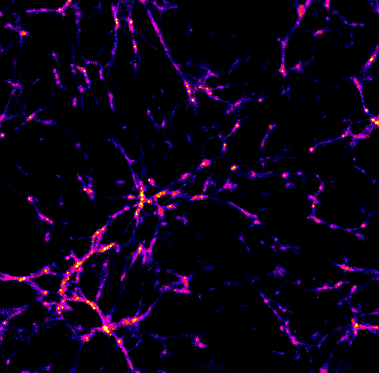 PS format(150KB)/
GIF format(120KB)
PS format(150KB)/
GIF format(120KB)Credit: Tom Theuns, ref.1
| Simulations Including Gas |
| Simulations of InterGalacticMedium |
Tom Theuns and his collaborators are studying the evolution of the Ly_alpha forests at high redshifts.
Pic.1 Gas density distribution in a volume of size 11x11x1.35
(h-1Mpc)3. High density regions are yellow, low density regions are
black. The mass resolution is 1.5 x 106 Msun. The gas has a
characteristic filamentary appearance, with high density knots
corresponding to forming galaxies at the intersection of two or more
filaments.
 PS format(150KB)/
GIF format(120KB)
PS format(150KB)/
GIF format(120KB)
Credit: Tom Theuns, ref.1
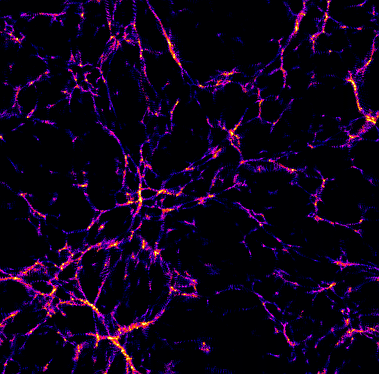 PS format(180KB)/
GIF format(140KB)
PS format(180KB)/
GIF format(140KB)| Hydrodynamic simulation with radiative cooling |
Yoshida et al. (2002, see the reference below) used two techniques for following gas cooling in simulations of galaxy formation, and compared the results such as `galaxy' (cold dense gas) masses and their positions.
Pic.1 Projected gas distribution in a box of 15
h-1Mpc.
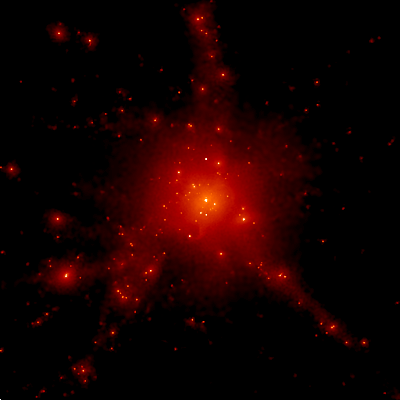 PS format(150KB)/
GIF format(120KB)
PS format(150KB)/
GIF format(120KB)
Credit: See ref.2
SPH simulation (left) and the semi-analytic model (right)
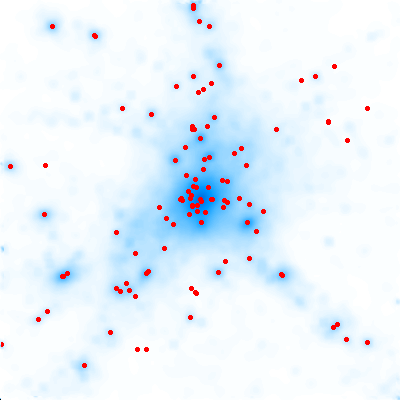
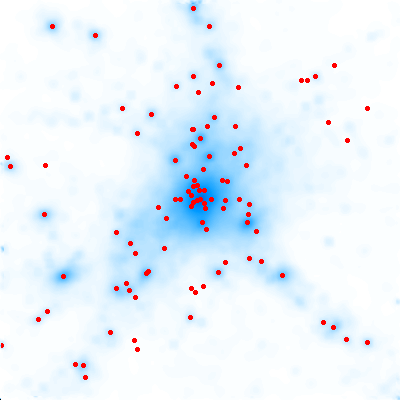
Credit: See ref.2
| SPH/N-body Simulations of Clusters |
Formation of a cluster size dark halo by collisional and
collisionless dark matter
Pic.1 Projected mass distributions in a cube box 15 Mpc/h per oneside (left column) and in the central regions of 2 Mpc/h per one side (enlarged, right column). The picture clearly shows the difference (as well as similarlities in the outer region of the halo) in mass distribution, morphorlogy of the central part, and abundance of subclumps.
Last modified: Thu Jan 13 13:30:54 MET 2000 by Virgo Administrator